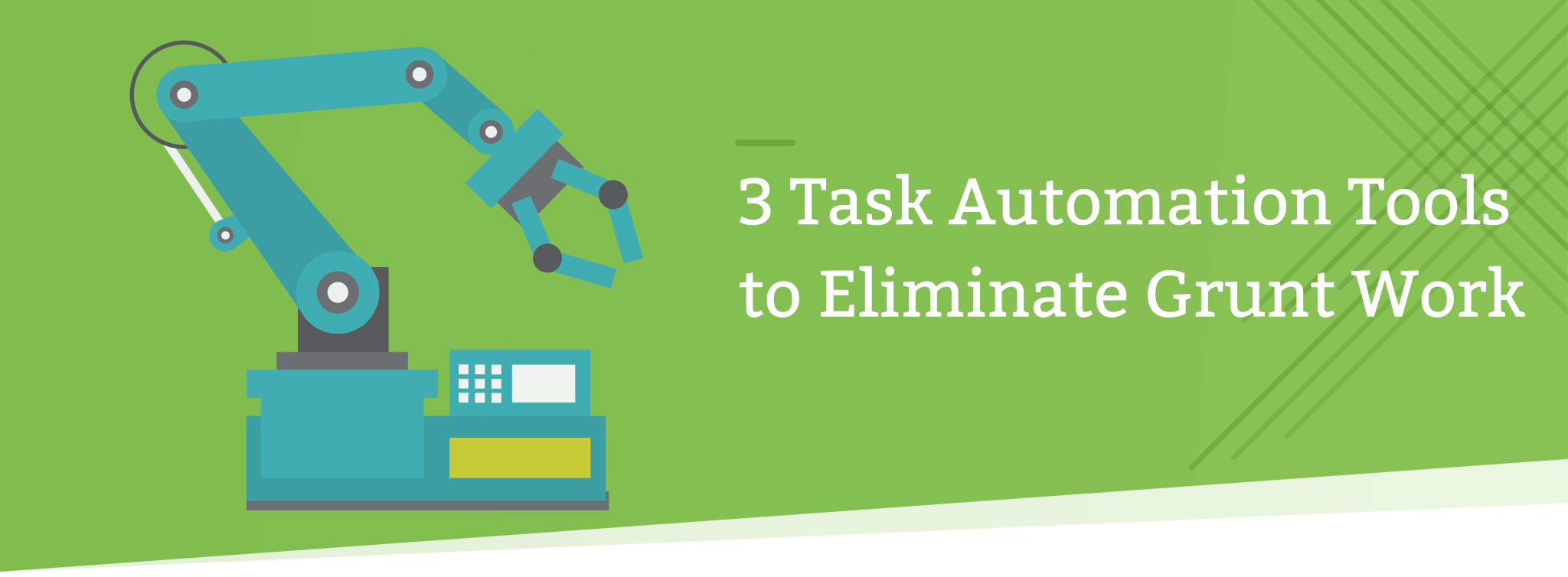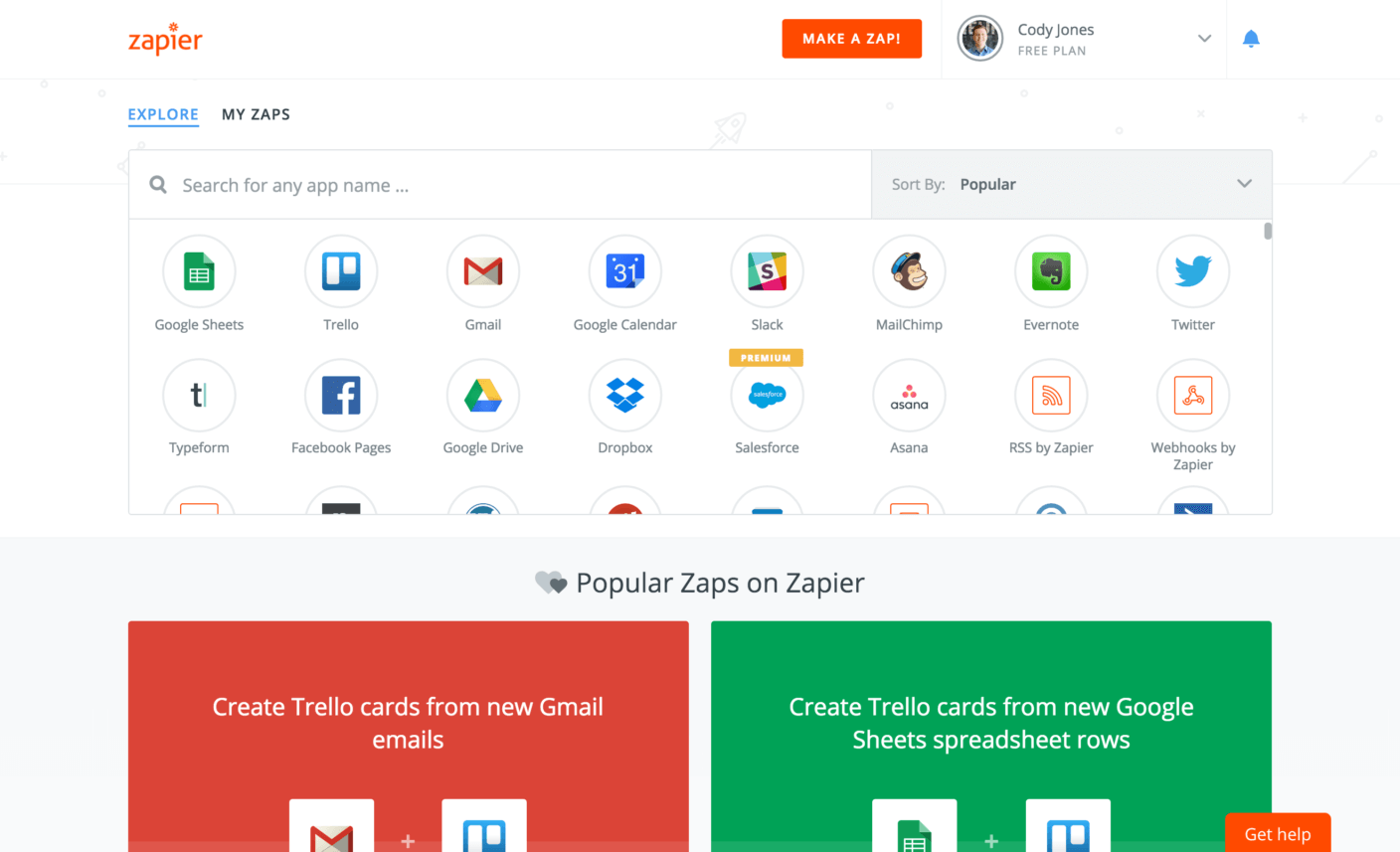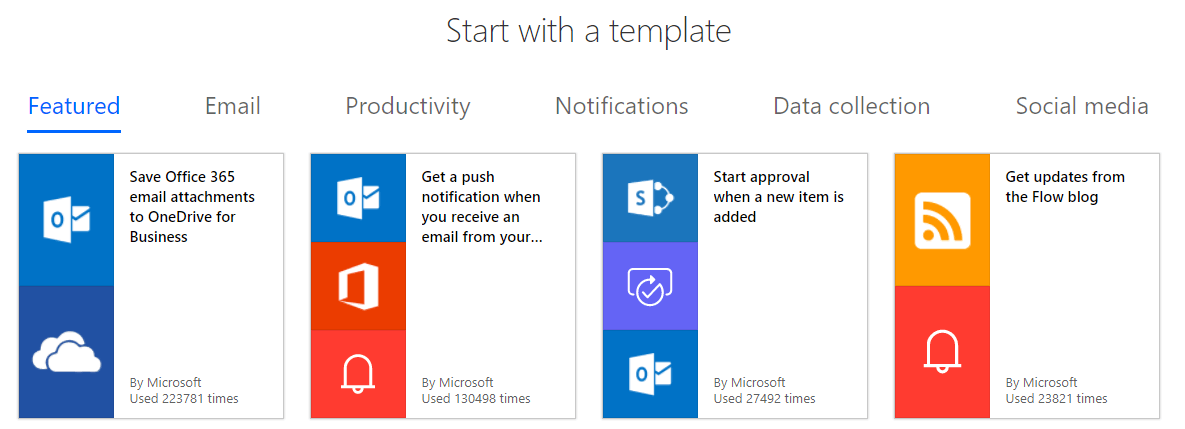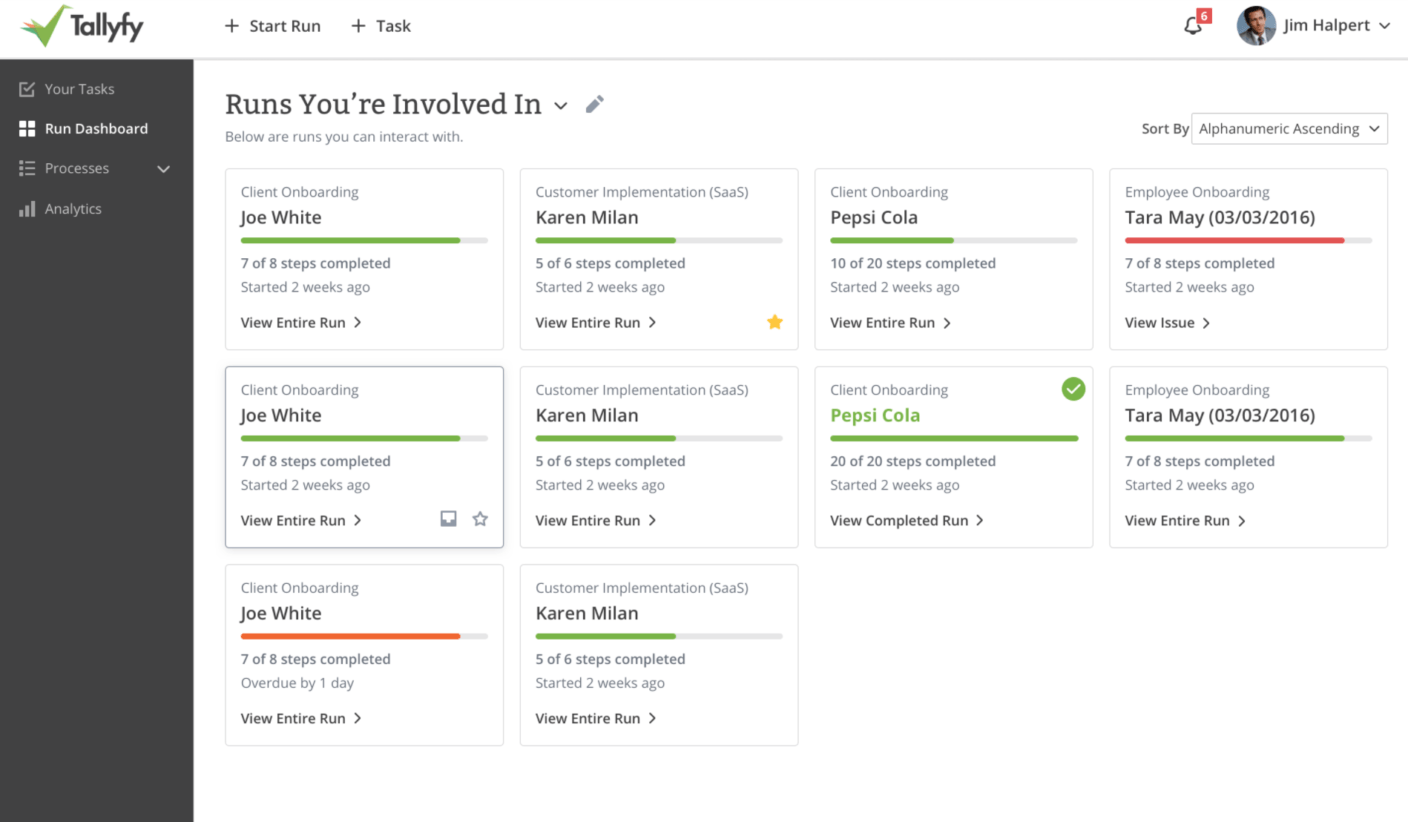
Every company has grunt work. It’s the type of tasks that just about anyone can handle; it just requires the time and effort.
And well, no one really likes doing that. Your highly-skilled employees aren’t too happy about having to do menial work – and as it’s widely known, the happier your employees, the more productive they’ll be.
Grunt work could be, for example, taking all of the leads captured through MailChimp and transferring them to your CRM platform.
Or, you might be copy-pasting a new hire’s personal information from their application to your internal HRM platform.
If you’re doing this manually, this can be very time-consuming, especially if you’re thinking long-term. Doing this a couple of hours a week adds up, ultimately wasting a lot of your team’s time.
Today, those, you really don’t have to be doing a big chunk of menial work.
There are a lot of task automation tools that do your job for you by making your different systems communicate with each other. And you know what the best part is? You won’t even need to write a single line of code for this – all you have to do is pick the right tool
3 Must-Have Task Automation Tools
These task automation tools play the middle-man between all of your different software.
While most of them offer the same general functionality, there are certain features that put them apart from each other.
Zapier

Chances are, you’ve probably already heard of Zapier. It’s only one of the most popular task automation tools out there.
It allows you to “zap” together different software, carrying over data from one tool to another.
Zapier’s main advantage is that the tool offers integrations with most of the apps you’ll find online. To learn about all the potential combinations, you can check out this guide here.
Flow

Flow is Microsoft’s very own task automation tool.
While it doesn’t offer nearly as many software integrations as Zapier, its main benefit is that it works in combination with Office 365.
So, if your organization works mostly with Microsoft products, Flow would be your go-to.
Tallyfy

Let’s say you have a set of different tasks that need to be completed. Once each task is done (either manually or automated), you need to communicate to the next task owner that they have new work to do.
Tallyfy helps with just that – setting up communication between different tasks.
While it doesn’t exactly automate the task, it removes the managerial overhead needed to make sure everything gets done.
And as a given, it can be integrated with all the other tools we’ve mentioned here.
Task Automation Tools: 2 Practical Examples
Depending on what your company does, the tasks you’d automate would be very specific to your own niche.
To get you started, though, we’re going to cover 2 examples of automation in business functions that are present in just about every organization.
Customer Support
It’s pretty common knowledge that your customers are the core of your business.
So, it’s important to make sure that their concerns are taken care of ASAP. Unless you have a dedicated support team, though, customer support turns more into an after-thought.
In a lot of cases, you’re focusing on other tasks, and only occasionally checking your email or customer support tool.
To make sure you’re getting back to your customers in time, you can use a combination between Zapier, Intercom (if you’re using customer support software) / Gmail (if it’s email-based) and Slack.
So now, whenever you get a customer ticket on either Intercom or Gmail, you can set up a direct message to be sent to you on Slack, letting you know that there’s someone waiting for a reply ASAP.
Client Onboarding
Taking on a new client can be a very long process.
You’d need to gather all the right information (company information + their needs), carry out the client onboarding process, and finally kick-start your work with them.
All this is done through different platforms.
- The interaction starts on the website, where the lead leaves their email.
- The salesman has to get in touch with them and get their data through Typeform.
- Based on the information from the Typeform, you start the onboarding process using Tallyfy.
- Once the process is complete, you copy + paste information from Typeform into your favorite project management software and start working with the client.
Yep, you guessed it. That’s a lot of different steps that need manual intervention.
Instead, you can use Zapier to tie all the different apps together. Once someone signs up on the website, they automatically receive the Typeform email. Then, the data is automatically transferred through all the different software tools.
Starting off with Task Automation
Now that you know how task automation works, you can start coming up with your own uses for it.
While the example we provided work for a lot of organizations, they’re not the only task automation uses.
The sky’s the limit! Dive into the different tools & find out yourself how much of your work can be automated.
Related Questions
What is an example of task automation?
Take that boring ritual of sending out welcome emails to new customers. I’ve watched teams do this for hours! Automation, the system sees a new signup, and—poof! —delivers a personalized welcome in an instant. At Tallyfy, we watch all kinds of mundane tasks types — approvals of documents, sequences of customer onboarding, support ticket routing — whir silently in the background. It’s like training your computer to do the whole Monday morning busywork, so you can spend your time on things that really matter. Say goodbye to copy-paste nightmares!
How can I automate my tasks?
Kick it off with a “process hunt” — get some coffee and write down all the tasks you do repeatedly every week. Look for those time-vampires! Get easy workflow automation software (we’re good at this one at Tallyfy) Start small — perhaps automating form approvals or converting client emails into tasks with tracking. I always tell our customers: don’t boil the ocean—identify those repetitive tasks that make you think “surely a computer could do this” and liberate yourself to do the work that requires your human brilliance.
What are the benefits of task automation?
But task automation is not just about time-saving—it is about taking back your workday! In addition to obvious time savings, it dramatically reduces those facepalm moments when human error is the culprit. Our clients have told us that they feel liberated when the robotic tasks go to, well, robots. What’s most surprising: companies find that talented folks suddenly start contributing ideas they couldn’t share before it, due to being too snowed under with existing work. And, your automated workflows happily chug along at 3 AM without requesting overtime or making fatigue errors. It is as though you have digital workers who never get bored of menial tasks.
How can I use AI in task automation?
AI is where automation gets genuinely exciting — where you start to move beyond “if this, then that” to “this seems important, so I’ll respond appropriately. I’ve watched AI read customer messages, determine sentiment (furious or simply annoyed?), and dispatch accordingly. The sweet spot is having AI take care of cognitive heavy lifting while humans still provide oversight for subtle judgment calls. It’s not about replacing human intelligence but augmenting it — letting AI take care of that first 80% of processing and leaving your team free to apply their brainpower to the complex 20% where creativity and empathy come into play.
Which tasks should I automate first?
Look for those soul-crushing, repetitive tasks that have clear rules—they’re automation gold! All the stuff on data entry, approval processes, status update reports are perfect first candidates. Also focus on error-prone tasks for which a lapse in competence (even momentarily) has headaches—such as compliance checks or calculations. Pro tip: Make an ‘automation value’ score by multiplying frequency, time taken and tedium level. Tackling your highest-scoring tasks will earn you hero points sooner than you can tap that coffee mug! Save those creative, emotionally complex decisions for humans — at least for now.
What are the common challenges in implementing task automation?
Let’s be straight—automation is not always plain sailing. I’ve witnessed teams inch toward inertia, automating the wrong processes or languishing in tool-comparison hell. Then there’s the human element—I recall one particular project where staff silently threatened to sabotage the automation because they were worried about obsolescence (they ended up loving it once they saw how it worked). Technical glitches in setup can stretch anyone’s patience. The secret sauce? Clear communication, beginning with process improvement successes that generate momentum, and making sure that everyone understands how automation makes their jobs more meaningful—not in jeopardy.
How much can task automation save in costs?
The numbers can be quite staggering — we typically see time spent on a task reduced by 40-70%. The most interesting savings, however, often glitter in the unlikely places! There’s time recovered, but also money not spent fixing mistakes, revenue tracked down from speedier delivery and innovation released into the wild when bright minds aren’t swamped in busywork. For one financial client, they calculated their automation ROI as 3.7x in their first 6 months! All you have to do is figure out both the tangible savings (in hours and dollars) and the more slippery intangibles (like lower stress levels). Your CFO prefers the first set, but your team experiences the second set every single day.
How do I measure the success of task automation?
I’m kind of obsessed with measuring success by automation—likely because I love seeing the change! Take clear baseline metrics before you begin. Track the obvious (time saved, errors cut) but don’t forget “happiness metrics” — employee satisfaction and reduced stress levels. Think about establishing a simple “automation satisfaction index” by way of pulse surveys. And have you ever thought—you never “set it and forget it” on automation. Regularly set aside time to tease out friction points. The best automations are constantly tweaked little by little based on real usage patterns.
Can small businesses benefit from task automation?
SO EVERYONE THINKS ABOUT BIG COMPANIES BUT SMALL HAVE THE BIGGEST BENEFITS! If you’re wearing multiple hats and racing against time every single day, automation is a game-changer. The tools of today are built to be human-friendly without an IT department or sizable budget. I’ve watched small teams implement rudimentary workflow management to produce service that looks like it comes from an organization many times its size. (Perhaps it is client onboarding, or generating proposals.) Focus on only one painful process, and spend the time saved on growth. Small business automation is not about complexity; it’s about removing the tasks holding you back from your best work in a strategic way.
How does task automation affect employee jobs?
I have witnessed firsthand how automation changes the nature of jobs rather than eliminating them. What happens is a freeing up from mind-numbing repetition to higher-value work — employees become process designers, problem-solvers, relationship-builders instead of data-entry robots. There’s usually initial trepidation (change is hard!), but I’ve seen skeptical employees turn into champions of automation once they experience life without mind-numbing tasks. The key? Engage your team from day one as co-creators and not recipients. Survey them and figure out which aspects of the job they’d never want to do again—that’s your automation starting point.
What does Tallyfy think about task automation personally?
We consider task automation to be liberation technology at Tallyfy. We started this company because we were tired of watching talented people squander potential doing the same busy work over and over. The fundamentals of our philosophy is humans should do what humans do best—create, empathize, solve complex problems—while the software does the predictable stuff. When organizations automate well, the organization isn’t just saving time; it’s changing the culture from one dictated by process to one that embraces innovation. We are especially proud when customers share with us how automation has helped alleviate their stress levels and allowed them to focus on work that matters.

